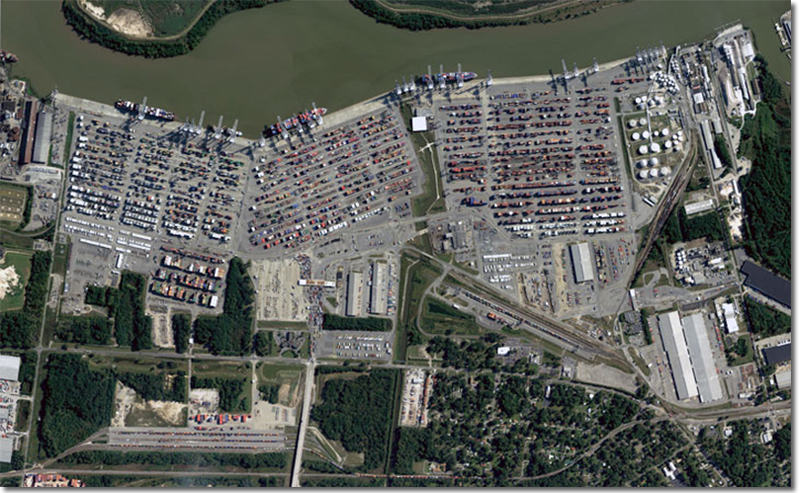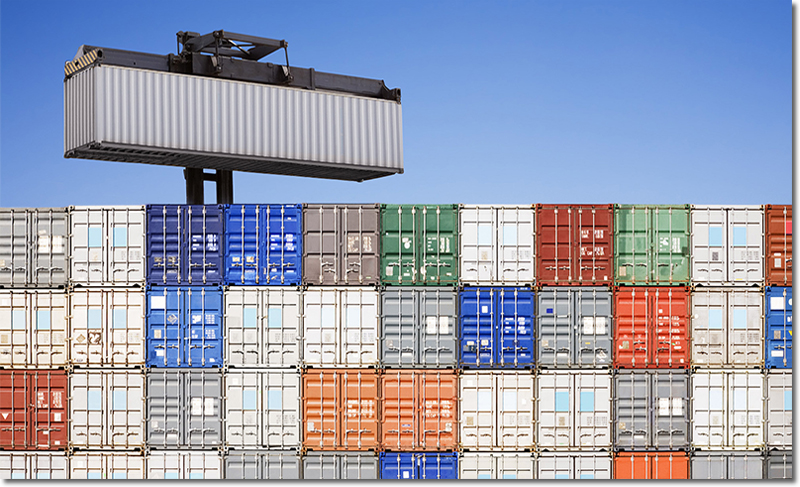Who
will clean up global commerce?
With natural resources diminishing, corporate profits are in the
firing line. Should companies be doing more to introduce sustainable business
practices and, if so, how should they go about it?
CEOs
need to get hands-on: many business leaders are unaware how quickly issues like
global warming will affect profits. Photograph: Jodie Griggs/Getty
Images/Flickr RM
Few play the system better than big business. Whether it’s
getting the lowest prices from suppliers, convincing us to buy their stuff or
keeping the taxman at bay, corporations reign supreme.
But what happens when the system starts playing them? Corporate
capitalism is getting closer and closer to finding out. By putting profits
first and the planet second (at best), businesses are helping accelerate many
of the most concerning “megatrends” of our age.
Corporations might not be overly concerned about climate change,
resource scarcity, food insecurity and so on today, but you can bet they will
be tomorrow when these planetary problems set their profits plummeting.
Finding ways to right this system before it’s too late formed
the basis of a recent roundtable discussion, hosted by the Guardian in
association with global financial services firm PwC. At the heart of the debate
was one basic question: what role can and should companies play in changing the
existing system of global commerce to make it more sustainable?
At the table
- Jo Confino (Chair) Executive
editor, Guardian News and Media
- Mike Barry Head of
sustainable business/Plan A, M&S
- Jon Williams Partner, PwC
- Chris Brett Global head
corporate responsibility and sustainability, Olam
- Geoff Lane Partner, PwC
- Chris Cook Global
sustainability director, AkzoNobel
- Louise Ellison Head of
sustainability, Hammerson
- Wiebke Flach Head of
membership, ETI
- Tim Haywood Group finance
director and head of sustainability, Interserve
- David Meller Director of
product integrity, The Fairtrade Foundation
- Katherine Teague Head of
advocacy, AB Sugar
- Darren Thomson EMEA
vice-president of marketing and chief technology officer, Symantec
- Estelle
Brachlianoff Senior executive vice-president, UK & Ireland,
Veolia
- Mark Wong Director of
strategic communications and corporate affairs, Sime Darby
- Michael Beutler Director
of sustainability operations, Kering
Delegates
discussed how corporates can collaborate to address global problems. Photograph:
Sam Friedrich
Three points became immediately clear. First, action is needed
now. Everyone around the table, which comprised sustainability experts from the
corporate and charity sectors, agreed about the urgency of the question at
hand.
Second, a similar consensus emerged, regrettably, concerning the
lack of business leadership. John Williams, a partner at PwC, put it most
clearly when he argued that most chief executives have “no idea” how quickly
issues like global warming and water scarcity will affect their businesses.
Finally, the idea that business can’t divest itself of
responsibility won wide agreement. The private sector needed to step up and
take a role in “rewiring” the existing system, Williams stated. And not just
one business at a time: the need for collective action across industry was a
core message from the debate.
Indeed, if one word characterised the discussion, it was
“collaboration”. Chris Brett, head of corporate responsibility and
sustainability at Olam, echoed the views of many when he said companies needed
to sit down with their peers and determine a “joint roadmap for accelerating
sustainability”.
The gap between what is competitive and “pre-competitive” has
shifted, argued Brett. He added:
“To be
able to sit with people and transparently talk about what your common issues
are – and what the common solutions are – is really coming to the forefront
now.”
If that sounds easy, it’s not. For companies operating in a
competitive environment, it’s “not second nature just to connect and talk about
this stuff”, admitted Darren Thomson, chief technology officer at US software
firm Symantec. For this reason, he believes independent organisations have a
vital role to perform, bringing key industry players together.
One such organisation is the Ethical Trading Initiative (ETI), a
cross-sector coalition that seeks to promote workers’ rights. According to
ETI’s head of membership, Wiebke Flach, effective collaboration takes
leadership, clear responsibilities, transparency and, in the case of global
supply chains, a reduction in the power of “certain middlemen”. Mike Barry,
head of sustainable business at Marks and Spencer, pointed to the Consumer
Goods Forum as a tangible example of how collaborative approaches can influence
systems change. This cross-sector alliance brings together many of the world’s
largest food manufacturers and retailers, he explained, and aims to make a
“material difference” in two areas: curbing deforestation and eliminating
HFC-based refrigeration.
Although the forum may not convince all the sceptics – big
retailers are still flogging product as they always have done – it has, at
least, enabled the food sector’s big hitters to trust one another enough to
make have a meaningful, productive conversation, said Barry. “Think of it as
version 1.0 of system change,” he added.
Opinions differed on the precise way progress should be
achieved. In one camp sat those who held to a “linear” view of progress: if a
business does A, B and C in sequence, then, the argument runs, D will
ultimately come about (D being systemic sustainability).
Among those subscribing to this approach was Chris Cook, global
sustainability director at Dutch paints and chemicals firm AkzoNobel.
Businesses, he said, need to: set a corporate sustainability vision (“Planet
Possible” in his company’s case); provide employees with the tools and
incentives to embed it; measure progress; and celebrate success when it
happens. “It’s good, sensible change-management stuff, but it takes a lot of
grind,” he said.
The approach adopted by AB Sugar follows a similar path.
Everything has to start with a clear idea of the end point, emphasised
Katherine Teague, head of advocacy at the UK sugar producer. She said:
“We’re
getting our people to think about what the future will look like and how we can
deal with the tricky issues that will come along.”
In addition to the usual management tools, however, companies
need to pick their priorities, she stated. “We can’t do everything. So we need
to think at a local level about what we can do, but also at a global level
about what we all need to do.”
In the other camp, some argued that systems aren’t linear, but
complex and interdependent – so the solution couldn’t just be linear either.
Estelle Brachlianoff, senior executive vice-president for Veolia in the UK
& Ireland, argued that a circular (or “round”) mindset was required.
Companies are only one cog in a much larger wheel, her argument
ran. Improvements to a company’s internal systems may be welcome, but they need
to be linked to the efforts of others if we’re to see large-scale change. That
may be “very difficult and very complex”, she conceded, but it is also “very
exciting”.
Others objected to pursuing a linear “incremental” approach on
the grounds of scale and urgency. Chipping away at a company’s carbon emissions
here or cutting waste there simply won’t change the system fast enough, said
David Meller, director of product integrity at the Fairtrade Foundation. His
solution: a radical redesign. “The nature of the change,” he said, “needs to be
so different that the system might have to look fundamentally different. So
when we talk about systems thinking, we shouldn’t necessarily talk about the
system as we know it. We should step outside it and almost redesign it.”
Nor is it necessary to map everything out at the start. Instead,
we should “learn by doing”. Innovation and experimentation – not data sheets
and strategy statements – are the engines of change, he argued. “We need to
recognise that systems change is not a precise science,” he argued. “You need
to take risks and be able to give things a go.”
Meller’s advocacy of a “systems doing” approach (as opposed to
just “systems thinking”) chimed with Tim Haywood, head of sustainability at
support service and construction company Interserve, who confessed to taking
inspiration from his daughter, a climate change campaigner. He said:
“The
idealism of youth is something we all need to connect back to, rather than
being weighed down with all the reasons not to [try something].”
Many would assume that therein lies financial ruin. Not Haywood
(who is also Interserve’s finance director). Despite being “new to the game”,
his company recently tabled a bid for a £600m government contract to provide
probation and rehabilitation services. Having gone back to fundamentals to
consider the “root cause” of prisoner reoffending, they drew on the expertise
of three major charities with expertise in combating drug addiction,
homelessness and social exclusion – and produced a successful combined bid.
In an ideal world, businesses would realise for themselves the
need to build a more sustainable system. After all, it’s in their interest –
healthy profits ultimately require a healthy planet. Yet too few business
leaders twig this. Even when they do, the commercial benefits are often not
clear enough or immediate enough, said Mark Wong, director of strategic
communications and corporate affairs at Sime Darby. “People on the ground say:
‘That sounds fine, but what’s in it for me?’”
Hence, the hesitancy among many to leave the private sector to
fix the system on its own. As PwC’s Williams said by way of conclusion: “Most
CEOs go through a risk assessment and they all conclude that it [systems
change] is just too risky.”
An inevitable conclusion is that legislators need to step in. It
fell to Louise Ellison, head of sustainability at property management firm Hammerson, to spell it out. “The problem is so
big that at some point somebody is going to have to say: ‘Clearly there are
solutions that can work in that industry, so you’re just going to have to
deliver them.’ It will have to be mandated.”









